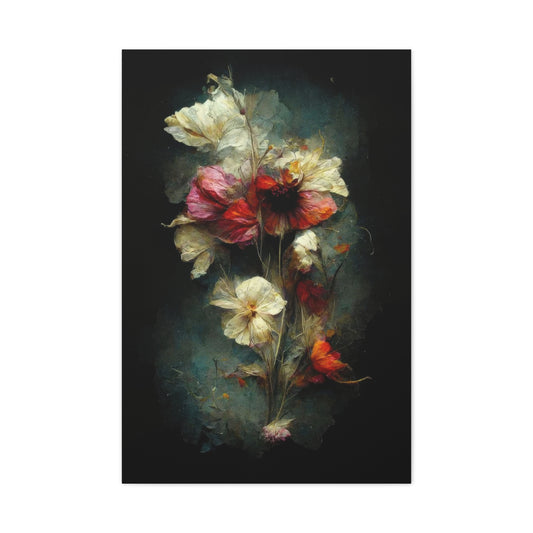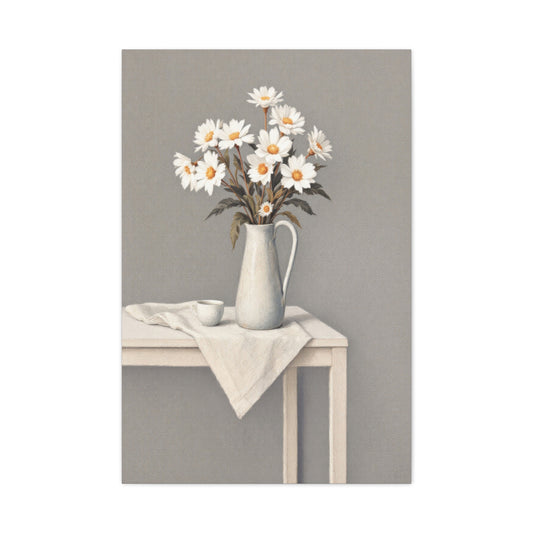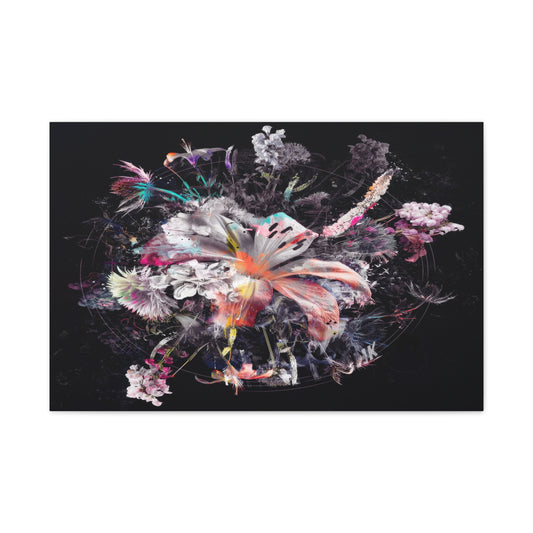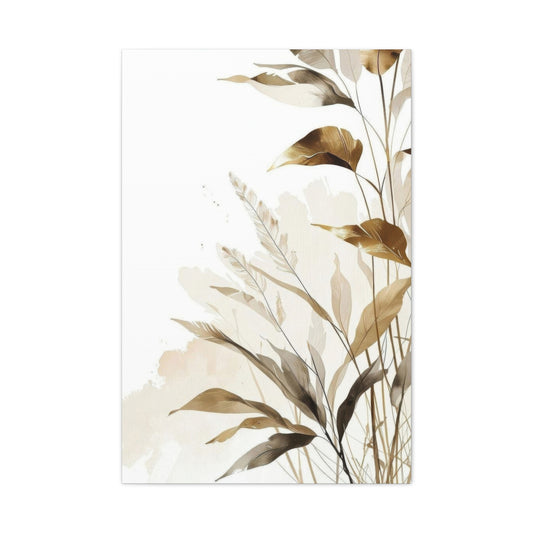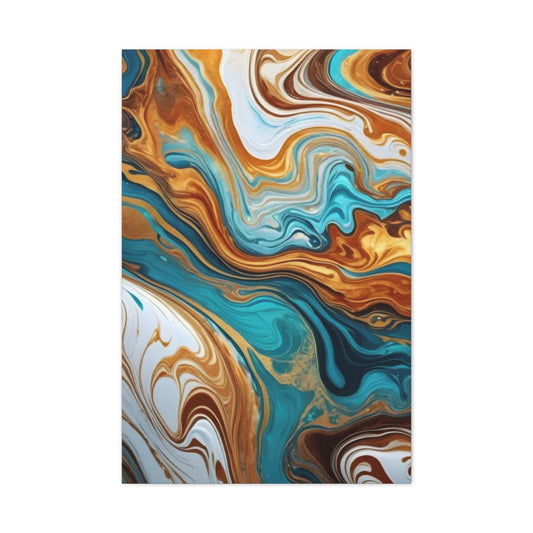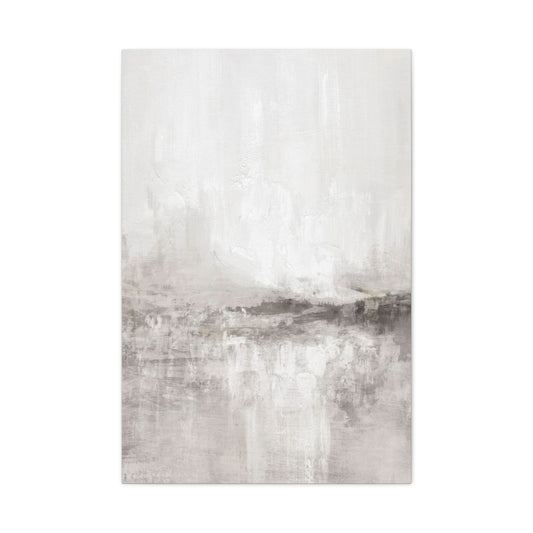Yupo Paper: A Revolutionary Medium for Watercolor Artists
In recent years, Yupo paper has emerged as an intriguing alternative to traditional watercolor paper, capturing the attention of both seasoned and novice artists. This synthetic, non-porous paper, made from 100% polypropylene, offers a dynamic surface that challenges conventional watercolor techniques. Unlike regular watercolor paper, Yupo doesn’t absorb paint in the typical manner, which significantly alters how watercolors behave on its surface. For many artists, the excitement of experimenting with this innovative material has opened up new creative possibilities, offering an entirely different approach to the medium of watercolor.
What Makes Yupo Paper Unique
Yupo paper is manufactured using a specialized process that involves extruding heated polypropylene pellets into both the base and surface layers of the paper. This technique results in a highly durable and smooth substrate that stands apart from traditional papers. Its non-absorbent quality is perhaps the most striking feature of Yupo, and this trait fundamentally changes how watercolors interact with the surface. When you paint on Yupo, the watercolors sit on top of the paper rather than soaking in. This allows for greater control over the movement of pigments, giving artists the ability to push and pull colors in unique ways.
One of the most exciting aspects of Yupo paper is its lifting ability. With its slick, smooth texture, watercolors can be lifted easily, making it possible to erase or modify parts of the painting long after the initial application of color. This is something that traditional watercolor papers, with their absorbent nature, don’t allow as easily. The ability to manipulate colors on the surface without worrying about the paper’s absorption changes the way artists approach their work, especially for those interested in exploring bold, fluid techniques.
The smooth texture of Yupo paper also makes it an ideal surface for those who prefer a more controlled approach to watercolor. Whether you’re creating detailed works of art or experimenting with abstract forms, Yupo’s surface allows you to see the brushstrokes clearly and manipulate the paint with precision. The fact that Yupo is made from synthetic material means that it is exceptionally resilient, and it is far less likely to tear or degrade over time compared to traditional watercolor papers, which can often wear out with extensive use.
Another defining feature of Yupo paper is its versatility. Available in three distinct typesTranslucent, Medium, and HeavyYupo gives artists the flexibility to select the right paper for their specific needs. The Translucent version has a delicate, almost parchment-like appearance and is incredibly thin, which provides an entirely different set of challenges and rewards for artists compared to the more substantial Medium and Heavy versions. Each type offers a different weight and texture, allowing for a wide range of creative possibilities. Whether you’re painting small, delicate pieces or working on larger, more textured works, there is a Yupo paper that will suit your artistic vision.
The Future of Yupo Paper in Watercolor Art
As more artists discover Yupo paper, it’s becoming clear that it is not simply a passing trend but rather a transformative tool for those who want to push the boundaries of watercolor painting. The unique properties of Yupo offer a fresh, exciting approach to watercolor art, encouraging experimentation and innovation. The ability to lift colors, create smooth washes, and manipulate the paint in ways that would be difficult on traditional papers gives artists an incredible degree of creative control. This, in turn, leads to more dynamic, fluid, and contemporary watercolor works.
The range of Yupo papers available also allows for a personalized experience, as artists can choose the type that best suits their working style and artistic goals. Whether you’re working on large-scale paintings or intricate, small-scale studies, Yupo offers a diverse range of possibilities. As artists continue to explore this material, new techniques and methods will likely emerge, further expanding how Yupo can be used to create stunning watercolor art.
For those who are hesitant to try Yupo paper, I would highly encourage them to step out of their comfort zone and experiment with this exciting medium. While it may feel unfamiliar at first, the rewards of working with Yupo are well worth the effort. It offers a level of flexibility and creativity that traditional watercolor papers cannot match, making it a valuable addition to any artist’s toolkit. The world of watercolor art is always evolving, and Yupo paper is undeniably part of that evolution, offering new possibilities for both experienced artists and those just starting on their watercolor journey.
Unleashing the Potential of Yupo Paper in Watercolor Art: The Power of Lifting and Blending
Yupo paper is rapidly becoming a favorite among watercolor artists for its unique characteristics that set it apart from traditional watercolor papers. Its ability to lift and blend colors in ways that conventional papers cannot make it an exciting medium to experiment with. This synthetic paper offers a range of possibilities that can significantly enhance the watercolor painting experience, especially for those who love to push boundaries and explore new techniques. By focusing on its lifting and blending properties, artists can unlock creative potential and embrace a completely different approach to their craft. Let’s take a deep dive into how Yupo paper transforms the way we interact with watercolor paints and allows artists to tap into a rich world of creative freedom.
Yupo paper, made from polypropylene, is not only water-resistant but also non-porous. Unlike traditional watercolor paper that absorbs pigments and water, Yupo keeps them on the surface, allowing for remarkable fluidity in both blending and lifting. This distinctive feature makes it incredibly versatile, enabling artists to manipulate the paint in ways that seem almost magical. Colors can be moved, blended, or lifted with ease, offering a sense of spontaneity that is often difficult to achieve with more absorbent papers. This quality opens the door for unpredictable yet beautifully expressive effects, where the watercolor appears to “dance” across the surface rather than being confined by the limitations of paper texture.
One of the most fascinating aspects of Yupo paper is its ability to lift pigment with ease. Unlike traditional watercolor papers that may absorb pigment and make it difficult to remove once dry, Yupo allows artists to lift color effortlessly. This is a particularly powerful tool for those who love to work with layers and refine their paintings after the initial wash. By using a damp brush or sponge, artists can erase sections of a painting, uncovering the stark white surface beneath or revealing subtle nuances in the color that weren’t apparent initially. This lifting ability also allows for correction, experimentation, and the creation of striking highlights. Artists can push the boundaries of their compositions, adding a level of refinement and control that is often difficult to achieve on more traditional surfaces.
The blending potential on Yupo is equally remarkable. The non-porous nature of the paper means that watercolor pigments can remain in a state of fluid motion for longer periods, giving artists more time to work with them. This allows for seamless gradients, smooth transitions, and even unique textural effects that can’t be replicated on traditional watercolor papers. The paint almost “flows” across the surface, giving it a sense of vitality and unpredictability. By working in layers, artists can achieve depth and dimension that seem to emerge from the very surface of the paper, rather than being created through careful brushwork alone. The blending of colors becomes more intuitive, as the pigments often mix on the surface in an organic, effortless way, with the paper’s smooth texture helping to achieve soft edges and velvety transitions.
Moreover, Yupo paper offers an exciting opportunity for artists to explore the boundaries of contrast and opacity in their work. While traditional watercolor papers often struggle with strong contrasts between light and dark due to their absorbent nature, Yupo can maintain crisp, clean lines even when deep hues and vivid colors are used. This allows for more striking compositions with clear separations between colors, making it easier to manipulate the tonal balance of a painting. The paper’s reflective quality also adds an intriguing dimension to finished pieces, enhancing colors with a vibrancy and intensity that is often more difficult to achieve on absorbent surfaces.
One of the key advantages of working with Yupo is the speed at which an artist can complete a piece. Since the paper does not absorb paint, drying times are significantly faster, allowing artists to layer and adjust colors with ease. This rapid drying time creates a dynamic workflow, where immediate adjustments can be made and decisions taken on the fly. For many artists, this creates an entirely different mindset, as they are no longer beholden to the drying time and potential warping that often comes with traditional watercolor papers. Instead, they can focus more on the creative process, knowing that the paper will remain smooth and unyielding, no matter how many layers they apply.
However, this smooth surface and lack of absorbency do come with their own set of challenges. Artists used to traditional watercolor papers may initially struggle with control, as the pigments do not behave the same way. The water may pool and spread more quickly than expected, which can sometimes lead to unexpected results. But for many, this challenge is part of the thrill of working with Yupo paper. The ability to work outside of the comfort zone and experiment with new methods offers a sense of freedom that can lead to truly unique artistic expressions. It encourages artists to embrace the unpredictable nature of watercolor painting and explore new avenues of creativity.
Yupo’s durability is another point of interest. Unlike traditional watercolor paper that can tear, buckle, or degrade over time, Yupo is resistant to damage and can withstand repeated manipulation. This means that artists can experiment with erasing, reworking, and layering paint without worrying about compromising the integrity of the surface. This makes Yupo a great option for both beginners and seasoned professionals who want to experiment without limitations.
The Magic of Lifting on Yupo Paper
One of the standout qualities of Yupo paper is its impressive lifting ability. Unlike traditional watercolor papers, which typically require a sponge, towel, or blotting tool to lift excess paint, Yupo offers a much more streamlined process. The ability to lift paint directly with a small amount of water and a brush is revolutionary for artists. When testing this feature, I was particularly amazed by how easily I could lift a deep green pigment off the paper with just a soft brush and a light touch of water. The color came off cleanly, leaving no trace behind, and the paper remained entirely flat throughout the process.
In contrast, lifting on regular watercolor paper can be much more labor-intensive. It often requires excessive blotting with sponges or cloths, which can disturb the integrity of the painting and sometimes alter the texture of the artwork. On Yupo, however, lifting is remarkably efficient, allowing the artist to remove colors with precision while maintaining the paper’s flat surface. The vibrancy of the lifted colors remains sharp and clear, ensuring that the original vibrancy of the pigments isn’t compromised. This makes Yupo an excellent choice for artists who want to work in layers but are hesitant about committing to the permanence of traditional watercolor methods.
The lifting ability on Yupo paper provides artists with a unique freedom: the chance to experiment without the fear of irreversible mistakes. For example, when working with darker hues, it’s often a challenge to remove them completely from traditional watercolor paper. On Yupo, however, even the deepest shades can be erased with minimal effort, leaving behind only the clean and precise traces of the initial pigment. This flexibility and control encourage creative experimentation, and the opportunity to erase and refine without fear makes it less intimidating than the rigid nature of traditional watercolors.
However, the lifting process on Yupo does require some patience. Since the paper is non-absorbent, it doesn’t allow the color to soak into the fibers like traditional watercolor papers. Instead, the paint remains on the surface, which means you must allow each layer to dry before applying the next. For those accustomed to the wet-on-wet technique, where colors blend and diffuse quickly, this process might feel slower and more deliberate. But for artists who seek a more controlled and refined outcome, this slower pace can be a blessing, as it allows for precise manipulation of each layer.
Blending Watercolors with Ease: The Fluid Movement on Yupo
Another distinctive feature of Yupo paper is its unparalleled ability to blend watercolors effortlessly. Traditional watercolor papers often require skillful manipulation of the brush and careful control over the water-to-paint ratio to achieve smooth blends. On Yupo, however, the paint flows across the surface with a fluid, almost liquid-like movement that gives artists more freedom in how they layer and merge colors.
I decided to test the blending capabilities by applying several layers of different watercolors to a Yupo Medium pad. After allowing each layer to dry, I reactivated the paint with a bit of water. The result was astounding: the colors mingled together beautifully, creating soft, seamless transitions that are difficult to achieve on conventional watercolor paper. On standard papers like Stonehenge Aqua Hotpress, the colors remained distinct, with sharp edges where each block of pigment met another. On Yupo, however, the paint spread and merged with ease, creating a harmonious, almost ethereal wash of color without any harsh boundaries.
For artists who embrace fluidity in their work, Yupo offers a thrilling opportunity to create loose, flowing watercolor pieces with minimal effort. The natural blending properties of the paper make it ideal for artists who prefer a more abstract or spontaneous approach to painting. The way colors mix effortlessly across the surface can lead to intriguing, organic effects that would be time-consuming to replicate on traditional watercolor paper.
However, this quality of fluid blending can also be a challenge for artists who prefer a more structured or controlled approach. The free movement of paint can sometimes result in unpredictable results, especially if too much water is applied. For those seeking precision, this characteristic of Yupo requires some careful consideration of water use. The amount of water applied can significantly impact how far the paint will spread, and too much can cause colors to blend beyond the desired boundaries. Therefore, understanding the medium and becoming comfortable with its fluid nature is crucial for mastering the technique.
Yupo Paper: No Buckling, No Warping, Just Precision
Beyond its lifting and blending qualities, one of the most practical aspects of working with Yupo paper is its resistance to buckling or warping. Traditional watercolor papers, particularly when saturated with water, can buckle and distort, often requiring the artist to stretch the paper beforehand to maintain a flat surface. This extra step can be time-consuming and sometimes frustrating, especially when working on multiple layers or wet-on-wet techniques.
Yupo paper eliminates this issue. Because it is a synthetic material, it remains completely flat regardless of how much water is applied. This feature is especially valuable for artists who want to avoid the hassle of stretching their paper before painting. It allows for a smoother, more efficient workflow since there’s no need to worry about the paper warping or distorting as the watercolors dry. This makes it a convenient and low-maintenance option for watercolor artists who want to focus on their creative process rather than spending time preparing the paper.
The synthetic nature of Yupo also contributes to its ability to stay flat, even when heavily saturated with water. This is particularly advantageous for those who work with large washes or want to apply a substantial amount of water to their paintings. With traditional watercolor paper, such applications would result in noticeable buckling, but Yupo's resistance to this issue ensures that the paper remains flat and stable throughout the painting process.
Additionally, the lack of absorbency in Yupo paper encourages a more intentional approach to watercolor techniques. As the paint doesn’t soak into the fibers, you can maintain more control over the colors and their interaction with each other. This characteristic can feel liberating for some artists, as it offers a different set of possibilities compared to traditional watercolors, which are often bound by the absorbency and texture of the paper.
For artists looking to experiment with new techniques, Yupo provides an excellent platform for trial and error. The ability to lift paint with ease, blend colors effortlessly, and avoid issues with warping gives artists the creative freedom to push their limits and explore new styles and approaches without being hindered by the usual constraints of watercolor paper.
Final Thoughts: Yupo Paper as a Game-Changer for Watercolor Artists
Yupo paper offers a fresh and exciting perspective on traditional watercolor techniques. Its lifting and blending capabilities, along with its resistance to buckling and warping, make it a highly versatile medium for both beginners and experienced artists alike. While it may require a shift in technique for those used to more absorbent papers, the control, precision, and freedom it provides can open up a new world of possibilities for watercolorists.
The non-absorbent surface and smooth texture make it perfect for experimenting with layering and blending, while the ease of lifting allows for bold choices and fearless corrections. The paper’s durability and flatness remove the need for preparation, making it an attractive option for artists looking for a straightforward and efficient workflow. Whether you’re an artist who loves to work in layers, blends colors with abandon, or simply prefers to maintain complete control over every detail of your piece, Yupo paper provides a canvas that responds in exciting ways to your artistic vision.
If you’re looking to expand your watercolor practice and explore new methods of painting, Yupo is certainly worth considering. With its unique qualities and endless possibilities, it can truly transform the way you approach watercolor painting, offering both creative freedom and control in equal measure.
The Aesthetic Impact of Yupo Paper: A Different Look for Watercolor Art
When it comes to watercolor painting, artists often have a specific surface in mind, one that absorbs the pigment and water in a way that enhances the traditional qualities of the medium. Yupo paper, however, is far from traditional. Its unique, non-porous, synthetic nature offers a completely new experience when working with watercolor. While it allows for a vibrancy and clarity of color that many artists find exciting, there is one particular aspect that may initially take some getting used to: the glossy finish that results from its smooth surface.
Unlike typical watercolor paper, which allows the pigment to soak into the fibers, Yupo paper prevents the paint from being absorbed. This creates a surface where the colors sit atop the paper instead of blending into it, resulting in a luminous, almost glass-like sheen when the paint dries. For artists accustomed to the more subdued, matte finish of traditional watercolor papers, this gloss can feel unusual or even distracting at first. However, for those willing to embrace the new texture, this characteristic can lend a polished, almost photographic quality to the painting that brings a whole new dimension to their work.
This glossy finish creates a striking contrast to the more muted and matte look that is traditionally associated with watercolor painting. The vibrant colors on Yupo appear almost as if they are glowing, lending the piece a vivid, contemporary edge. While this effect can be captivating and add a unique dimension to an artwork, it may also make the artist feel disconnected from the familiar tactile qualities they are used to with traditional paper. The way the paint behaves on Yupo feels more like a film that rests on top of the surface, rather than a pigment that permeates and interacts with the paper fibers.
For artists who thrive on experimentation, Yupo’s non-absorptive surface offers a playground for new techniques, creating opportunities to explore different media in ways that traditional papers simply cannot. The ability to move the paint freely across the surface, lifting and blending without the paper absorbing the pigment, can lead to stunning effects that push the boundaries of watercolor art. However, for artists more comfortable with the traditional properties of watercolor, this smooth, glossy finish can be challenging to adapt to, especially when it comes to the final appearance of the colors once they have dried.
Understanding the Challenges of Pencil and Fineliner on Yupo Paper
One of the most intriguing aspects of working with Yupo paper is its interaction with different mediums, such as pencil and fineliner. While watercolor paint behaves quite differently on this surface, other drawing materials can still work surprisingly well. For example, when sketching or outlining with a pencil, the marks adhere to the surface with ease. This makes Yupo a viable option for artists who want to create initial sketches and detailed drawings before applying watercolor. The pencil lines remain crisp and clear, without smudging or fading, which can be an advantage when laying down the groundwork for a more detailed composition.
However, the experience changes when introducing ink or fineliners into the equation. After applying watercolor on Yupo, many artists encounter the challenge of ink smudging or bleeding if they attempt to add fine details with pens before the paint has fully dried. This is because the glossy, non-porous surface does not allow the ink to absorb properly into the paper. As a result, if the watercolor is still wet or even just slightly damp, the ink will tend to mix with the surrounding paint, leading to unwanted smudging and blurred lines. This can be frustrating for artists who rely on precise pen work for their final details.
On the other hand, once the watercolor has dried completely, the situation improves significantly. Ink pens and fineliners can be applied smoothly on the Yupo surface without worrying about smudging. The crispness of the ink remains intact, allowing artists to achieve detailed, clean lines on top of the vibrant, glossy watercolor background. This makes Yupo a great surface for those who like to combine watercolor with pen-and-ink techniques, provided they allow the paint to dry thoroughly before adding the ink.
The ability to use a pencil and a fineliner in combination with watercolor offers artists more flexibility and creative control over their pieces. However, it also requires a heightened awareness of timing and surface conditions. Artists must ensure that their watercolor work is fully dry before applying any ink or fineliner to avoid unwanted disruptions to their design. As with any new medium, mastering these nuances can take time and experimentation, but the results can be incredibly rewarding.
Sealing and Finishing Touches: Protecting Your Artwork on Yupo Paper
When working with Yupo paper, finishing touches are critical to ensuring that your artwork remains vibrant and intact. Since Yupo is a synthetic paper with a non-porous surface, there are unique considerations for protecting the finished piece. One of the most crucial steps is sealing the work with a protective spray or varnish. This is particularly important because the smooth surface of Yupo paper makes it more prone to smudging, shifting, or even fading if the piece is not sealed correctly. Without a protective finish, the colors can remain susceptible to movement, making the artwork vulnerable to damage.
The best way to secure your painting on Yupo is by using a clear matt varnish or a finishing spray specifically designed for synthetic surfaces. This helps to lock in the colors, preventing them from being disturbed or altered through handling or exposure to environmental factors. While it may be tempting to skip this step, especially if the painting has dried to a beautiful, shiny finish, neglecting to seal the work can lead to frustrating results. The colors on Yupo can appear less stable over time, especially if the painting is exposed to humidity, dust, or oils from handling. By applying a protective coating, you ensure that your piece retains its vibrancy and clarity, without worrying about unintended smudging or fading.
It’s also worth noting that sealing the work not only protects the colors but also gives the surface an added layer of durability. Yupo paper, being synthetic, does not have the same texture or weight as traditional watercolor papers. As a result, it can feel delicate and more susceptible to physical damage, especially when touched. The application of a sealing spray ensures that the artwork can be handled with care without compromising its integrity. Furthermore, the protective layer can also enhance the appearance of the painting by giving it a consistent finish and increasing its overall longevity.
Embracing Innovation: The Fascinating World of Yupo Paper in Watercolour Art
Watercolour painting has long been celebrated for its ethereal quality, gentle blending, and translucent beauty. However, as artists constantly push the boundaries of creativity, new materials have emerged, offering fresh possibilities and challenges. Among these, Yupo paper stands out as an innovative choice for artists seeking to explore uncharted territory in watercolour painting. Its non-absorbent surface offers an entirely new approach to this traditional medium, enabling greater flexibility and freedom in artistic expression. For those willing to adapt and experiment, Yupo opens up a world of creative potential, where techniques can be redefined and new textures can be explored.
Unlike traditional watercolour paper, which soaks up pigment and water, Yupo paper remains completely non-absorbent. This characteristic drastically changes the way artists interact with the medium, allowing for easier colour lifting and blending. The paper’s smooth, glossy finish creates a unique surface for watercolours to glide across, creating vibrant, fluid washes that behave in unexpected ways. Artists can manipulate the paint with precision, shifting tones and textures as needed without worrying about the usual absorption limitations. Yupo’s lack of absorption allows for more control, enabling artists to experiment with colour interactions in ways that are difficult or impossible on traditional watercolour papers.
This innovative surface brings an exciting dimension to watercolour art, but it also requires a different approach. The techniques that work flawlessly on traditional watercolour paper may not translate as expected on Yupo. The colours don’t settle in the same way, and the water behaves differently. For artists accustomed to the absorbency of conventional paper, Yupo may seem like an elusive and unpredictable surface at first. However, once familiar with its properties, artists find that this very unpredictability is what makes Yupo so engaging. The ability to easily lift, blend, and manipulate colour allows for a level of experimentation that traditional paper cannot match.
Mastering the Art of Working with Yupo Paper
Working with Yupo paper requires more than just technical knowledge; it demands a shift in mindset. Artists must let go of preconceived notions about how watercolour should behave and embrace the quirks and challenges of this synthetic material. One of the key aspects to understand is that Yupo does not absorb water or pigment, so the paint will remain on the surface and can be manipulated at will. This provides a greater sense of freedom, but it also means that the artist must be more deliberate in their application and handling of the paint.
Unlike traditional watercolour paper, where the pigment is absorbed into the fibres and allowed to settle into the texture of the paper, Yupo provides a smooth, non-porous surface that prevents this natural interaction from occurring. The lack of absorption means that the pigment will stay on the surface, which allows for easy lifting, blending, and reworking of colours. This makes it possible to achieve vibrant, fluid washes that can be adjusted, lightened, or darkened as desired. At the same time, artists can experiment with textures and layering effects that would be impossible with traditional watercolour papers.
One of the challenges of working with Yupo is learning how to control the flow of water and pigment. Because the paper does not absorb water, it can sometimes feel as though the paint is slipping away, leaving behind unintended streaks or puddles. This can be frustrating for those used to the more forgiving nature of traditional watercolour paper, but with practice, artists can learn to harness this fluidity to their advantage. The key is to work in layers, allowing each layer of paint to dry before applying the next. This prevents unwanted bleeding and allows for greater control over the outcome. Additionally, Yupo responds well to various tools such as brushes, sponges, and even palette knives, giving artists the freedom to experiment with different textures and marks.
While the smooth surface of Yupo paper can be challenging, it also offers a tremendous opportunity for creativity. The lack of texture on the surface means that every mark made by the brush is crisp and clear, allowing for fine details and sharp lines. This can be especially beneficial for artists who want to achieve a more graphic or stylized effect in their watercolour work. Yupo also allows for layering in ways that traditional watercolour papers cannot. Artists can create vibrant, layered compositions with ease, reworking sections of the painting without the fear of damaging the paper or losing the integrity of the colours.
The Environmental Benefits of Yupo Paper and Its Sustainable Impact
While Yupo paper is made from synthetic materials, namely polypropylene, it offers certain environmental benefits that are worth considering. As a tree-free paper, it does not contribute to deforestation, a significant issue faced by many traditional paper manufacturing processes. This makes it an appealing choice for environmentally-conscious artists who are seeking to minimize their ecological impact. In addition to being tree-free, Yupo’s unique properties allow it to be reused multiple times. The smooth surface can be wiped clean, and the paper can be reworked without losing its integrity. This reusability can help reduce the amount of waste produced in the creative process, as artists can continue to experiment and refine their work without needing to use new sheets of paper each time.
However, it’s important to acknowledge that Yupo is made from polypropylene, a plastic material that, like many synthetic products, comes with its own set of environmental concerns. The production and disposal of plastic products are associated with pollution and long-lasting environmental impact. As with any material, the environmental footprint of Yupo paper should be considered carefully. That said, its longevity and reusability are key factors that help offset its environmental impact. The ability to wipe off and reuse the same sheet of paper multiple times ensures that less waste is generated compared to using traditional watercolour paper, which is often discarded after each painting.
In a world where sustainability is becoming increasingly important, Yupo provides a unique opportunity for artists to incorporate eco-friendly practices into their work. While there are still concerns about the environmental effects of plastic-based materials, the reusability and tree-free nature of Yupo paper position it as a more sustainable option compared to many other art supplies. For artists who are passionate about reducing waste and embracing sustainable practices, Yupo paper offers a way to engage with watercolour art in a more eco-conscious manner.
Conclusion: A Gateway to Innovation and Creativity
For artists looking to push the boundaries of their watercolour practice, Yupo paper presents a world of exciting possibilities. Its non-absorbent surface and unique properties open up new avenues for creative expression, from vibrant washes to intricate textures and layered effects. While it does require a shift in mindset and a willingness to embrace experimentation, those who take the time to master this medium will find a rewarding and limitless artistic experience.
The beauty of Yupo lies in its unpredictability. It challenges artists to rethink their approach to watercolour and encourages a deeper exploration of the medium’s potential. The smooth surface and lack of absorption allow for more control over the paint, offering a chance to create art that is dynamic, fluid, and expressive in ways that traditional watercolour papers cannot achieve.
Moreover, Yupo’s environmental benefits, particularly its tree-free and reusable qualities, make it an appealing choice for artists who want to reduce their environmental impact without sacrificing their creative freedom. While the use of synthetic materials always raises concerns, Yupo’s longevity and reusability make it a worthwhile option for artists seeking both innovation and sustainability in their practice.
Ultimately, Yupo paper represents a bold leap forward in watercolour art, offering a fresh perspective on a time-honoured tradition. For artists willing to experiment, adapt, and explore, Yupo presents a wealth of new techniques, textures, and creative possibilities. Whether you are a seasoned watercolour artist or a beginner looking to try something new, Yupo paper invites you to step outside the box and embark on a journey of artistic innovation.











